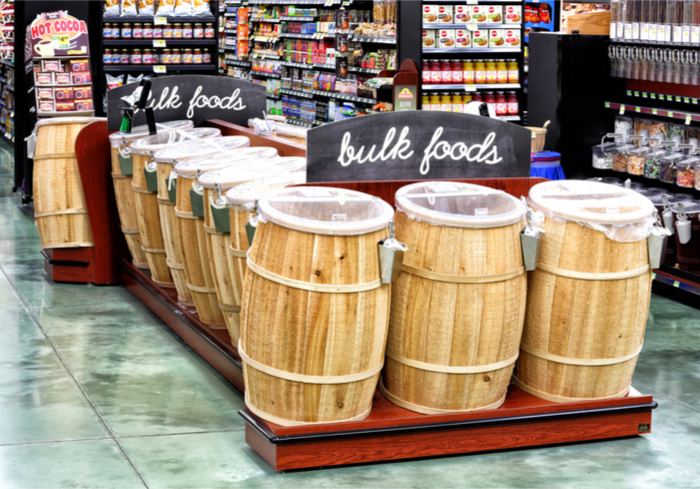‘Eco-Conscious’ Shops Emerge To Battle Food Waste

To tackle the problem of food waste, entrepreneurs are turning to a new business model in the grocery space, by creating concepts called zero-waste grocery stores, CNBC reported.
These stores seek to have customers bring their own containers and sell items in bulk. New York’s Filling Station, for instance, sells items like salt and olive oil that shoppers buy with reusable packaging to reduce waste.
The model has caught on in other parts of the world: Multiple zero-waste stores have opened their doors in European cities like Barcelona, London and Berlin. And in Asia, Singapore welcomed a zero-waste store in April. As a result, some entrepreneurs in the U.S. want to test out the concept.
One future store might be a concept named the The Fillery, which would carry spices, liquids and grains along with home care and cooking tools. “Customers will shop from bulk-style bins and dispensers and be able to buy the quantities they need,” Sarah Metz, who raised funds for the store on Kickstarter, told CNBC.
Americans waste tons of food — 1.3 billion tons a year, to be precise, or 30 to 40 percent of the total supply. Social and political implications aside, that’s just bad business. Supermarkets and restaurants are stocking nearly twice as much food as they can actually sell, which means it’s their budget dollars that are really going into the landfill.
Those numbers are from “Wasted,“ a recent documentary, and are backed by the USDA, which has set its own goal of reducing food waste by 50 percent less by 2030. Still, the cost of three bananas is low compared to the amount of food that’s trashed by restaurants every single day. To combat food waste, some chefs create special dishes with ingredients they need to use up, or by finding other creative methods of their own. Despite the efforts of some, however, restaurant food waste remains appallingly high.